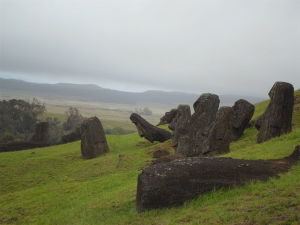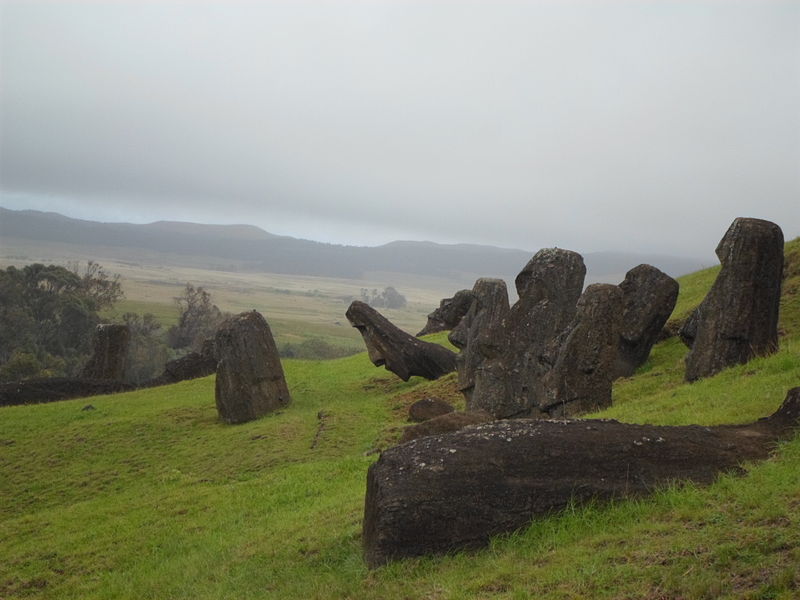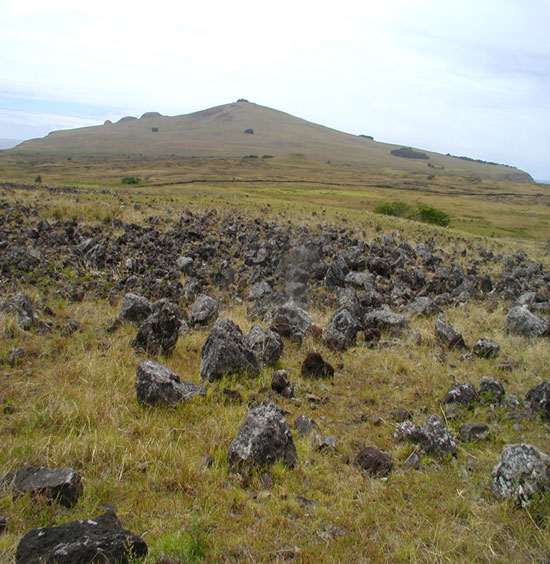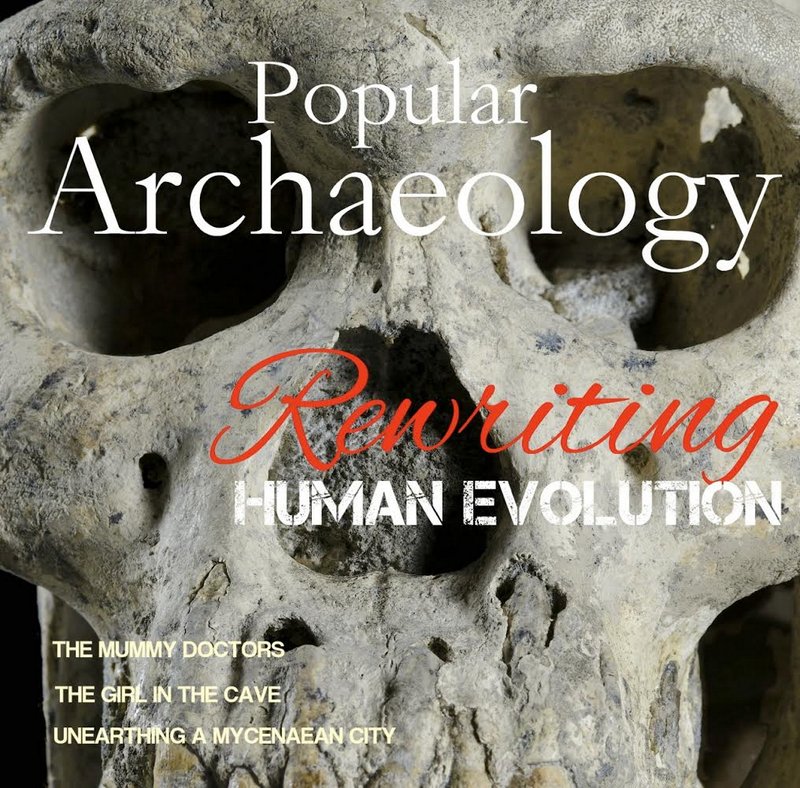
Scientists may be coming a little closer to the truth about what happened to the prehistoric inhabitants of Easter Island, the island in the southeastern Pacific far off the coast of Chile where, some scholars have theorized, an entire civilization (the Rapa Nui) collapsed due to runaway population growth, land mismanagement, the Polynesian rat, or warfare, or some combination of the three. Alternatively, some scholars have pointed to the possibility of population decimation due to smallpox, syphilis, and tuberculosis introduced by new European arrivals in the 18th century.
But Christopher Stevenson of the Virginia Commonwealth University and colleagues have concluded that the picture of what happened may actually be more complex and subtle, suggesting that “the concept of “collapse” is a misleading characterization of prehistoric population dynamics” on the island.*
Stevenson and colleagues analyzed hydrated obsidian tool and flake artifacts sampled from sites in separate regional areas and reconstructed a timeline that reflected regional land use and conditions within the context of rainfall variation and soil quality within the Rapa Nui habitation zones. “We evaluated region-specific land-use patterns in six study areas on Rapa Nui, focusing on three for which we have information on climate, soils, and land-use trends derived from numerous obsidian hydration dates,” wrote Stevenson, et al.*
Overall, the results indicated pre-European contact population and productivity declines in some near-coastal and upland areas, and post-contact increases and declines in other areas. The results, according to the study authors, “argues against the notion of an island-wide pre-contact collapse as a useful explanatory concept for Rap Nui— although it does support the reality of a pre-contact decline in land use that probably was associated with declines in food production.”*
_____________________________________
 The mysterious, iconic and massive maoi statues erected by the prehistoric Rapa Nui on Easter Island. Gallor Doval, Wikimedia Commons.
The mysterious, iconic and massive maoi statues erected by the prehistoric Rapa Nui on Easter Island. Gallor Doval, Wikimedia Commons.
_______________________________________
 A Rapa Nui Rock Garden, or agricultural field, with Poike volcano in the background. Image courtesy of Christopher M. Stevenson.
A Rapa Nui Rock Garden, or agricultural field, with Poike volcano in the background. Image courtesy of Christopher M. Stevenson.
________________________________________
The Rapa Nui are a Polynesian people who currently make up about 60% of Easter Island’s current population. Their prehistoric ancestors are thought to have inhabited Easter Island between 300 and 1200 CE. Many scholars suggest that the Rapa Nui had early contact with South America by 1200 – 1300 CE based on the presence of the sweet potato and bottle gourd plants on the island. Jacob Roggeveen, an early 18th century Dutch explorer, was the first European to contact the Rapa Nui when he arrived on the island on April 5, 1722.
The study is published in detail in the Proceedings of the National Academy of Sciences (PNAS).
__________________________________________________
* Article #14-20712: “Variation in Rapa Nui (Easter Island) land use indicates production and population peaks prior to European contact,” by Christopher M. Stevenson et al.
__________________________________________________
Just released!
The special new premium quality print edition of Popular Archaeology Magazine. A beautiful volume for the coffee table.
Travel and learn with Far Horizons.
____________________________________________
Read about the most fascinating discoveries with a premium subscription to Popular Archaeology Magazine. Find out what Popular Archaeology Magazine is all about. AND MORE:
On the go? Get the smartphone version of Popular Archaeology as an app or as an ebook.
Popular Archaeology’s annual Discovery Edition eBook is a selection of the best stories published in Popular Archaeology Magazine in past issues, with an emphasis on some of the most significant, groundbreaking, or fascinating discoveries in the fields of archaeology and paleoanthropology and related fields. At least some of the articles have been updated or revised specifically for the Discovery edition. We can confidently say that there is no other single issue of an archaeology-related magazine, paper print or online, that contains as much major feature article content as this one. The latest issue, volume 2, has just been released. Go to the Discovery edition page for more information.







